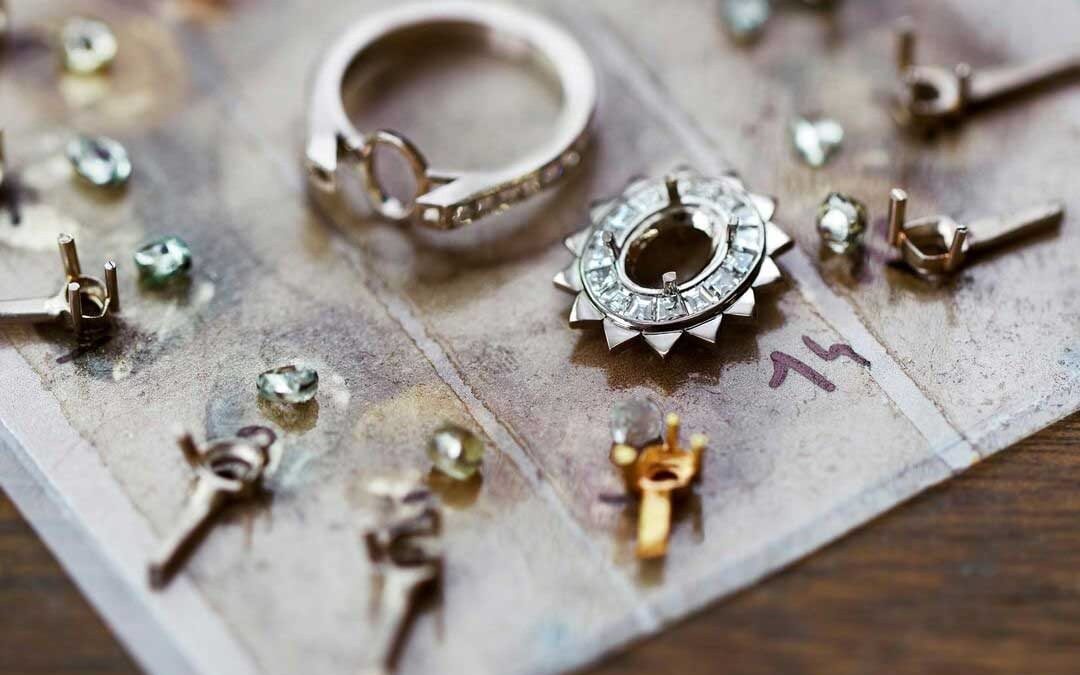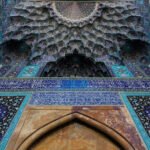
The Influence of Persian Architecture on Jewelry Design

Iranian Jewelry as a Cultural Heritage
Handcrafted vs. Machine-Made Jewelry: Why Handmade Iranian Jewelry Stands Out
Jewelry can be created through various methods, but there is a profound difference between handcrafted and machine-made jewelry. In the realm of Iranian jewelry, this distinction is particularly significant due to the country’s rich tradition of artisan craftsmanship. Handmade Iranian jewelry represents not only artistic expression but also the preservation of centuries-old techniques that have been passed down through generations.
In this post, we’ll compare handcrafted and machine-made jewelry, highlighting the uniqueness of handmade Iranian jewelry, and explaining why it continues to captivate people worldwide.
1. Craftsmanship and Artistry: The Human Touch
The most obvious difference between handcrafted and machine-made jewelry is the amount of human involvement in the process. Handmade jewelry is the result of an artisan’s skill, patience, and creativity, whereas machine-made jewelry is typically mass-produced using automated processes.
Handcrafted Jewelry: Attention to Detail
Handmade Iranian jewelry is created by skilled artisans who invest time and effort into every piece. The process often involves traditional techniques such as filigree, granulation, enamel work (Minakari), and stone setting, which require years of practice to master.
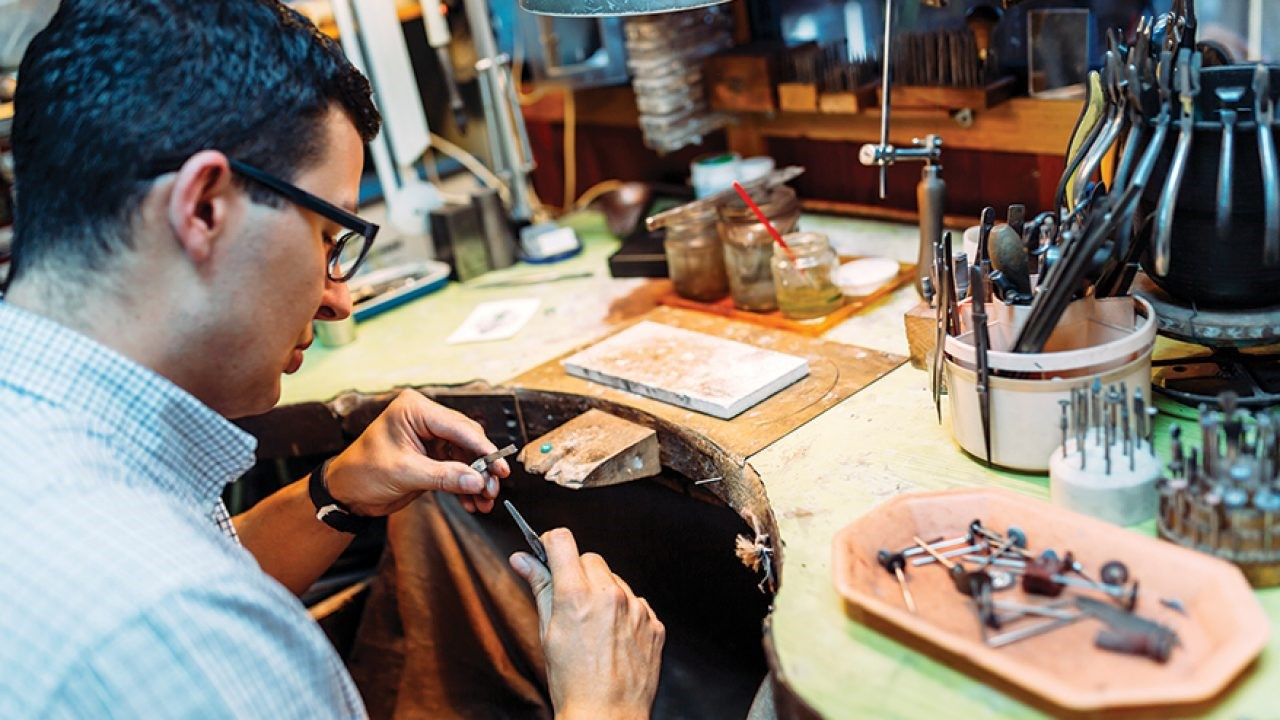
Traditional jewelry-making workshop
- Artisanal Skill: Each piece of handcrafted jewelry reflects the artisan’s expertise, with intricate details that machines simply cannot replicate. For example, Persian jewelry often features delicate geometric patterns, calligraphy, or mythical symbols, requiring the precision and artistry that only a trained hand can deliver.
- Unique Variations: No two pieces of handcrafted jewelry are the same. The subtle differences in each piece add to their charm, making them truly one-of-a-kind creations. These slight variations are a hallmark of authentic craftsmanship and contribute to the jewelry’s unique identity.
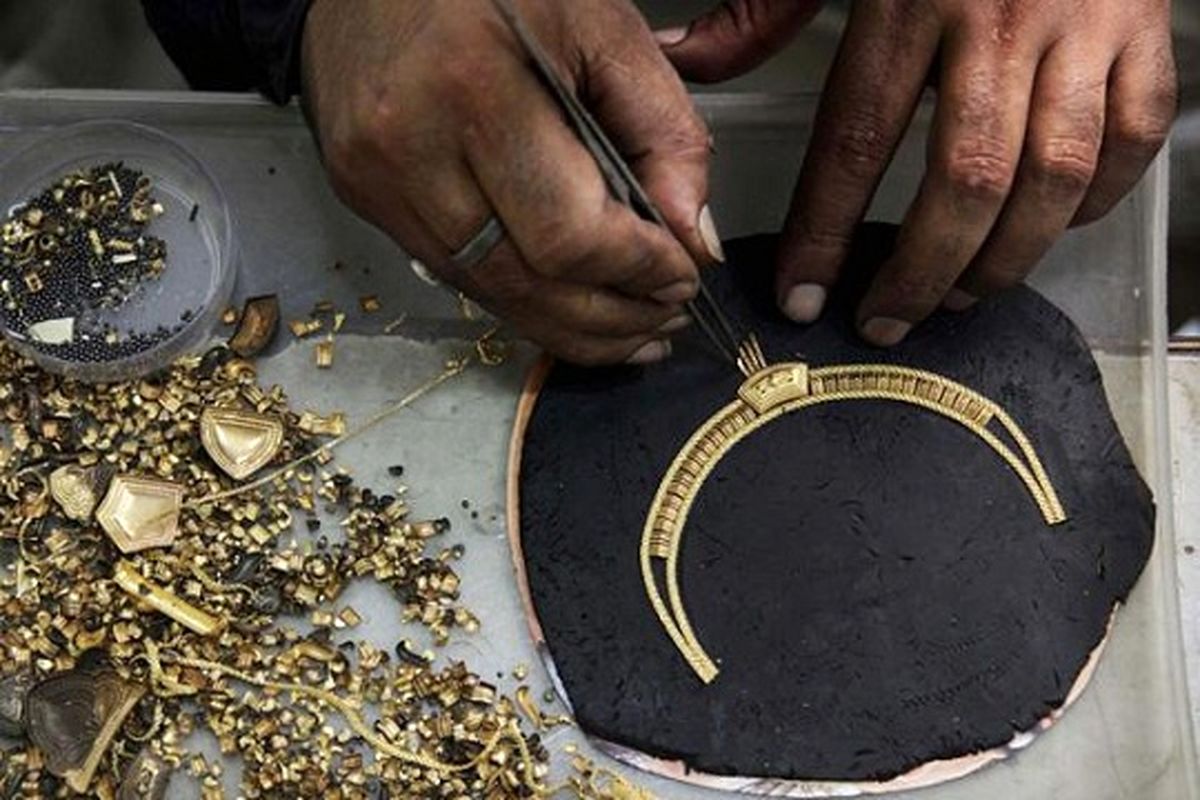
Traditional jewelry-making workshop
Machine-Made Jewelry: Mass Production
Machine-made jewelry, on the other hand, is created using automated processes that prioritize speed and efficiency. While this results in faster production, it often lacks the nuanced craftsmanship that comes from the human touch.
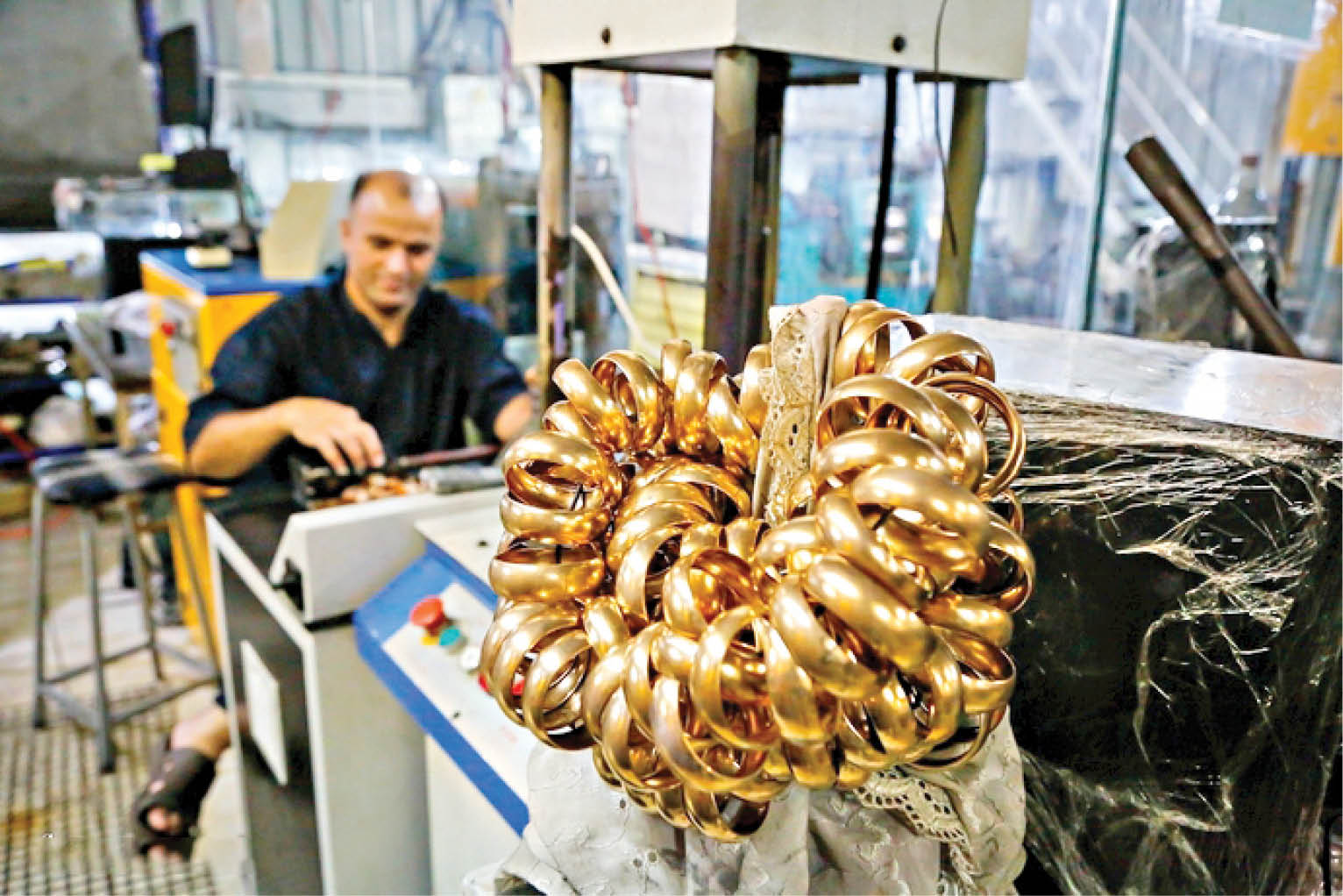
Machine-Made Jewelry
- Standardized Designs: Machine-made jewelry is typically mass-produced, meaning that thousands of identical pieces are created. While this may result in lower costs, it sacrifices the individuality and uniqueness that make handmade jewelry special.
- Less Personal Connection: With machine-made jewelry, there is often less connection to the artistic heritage and story behind the piece. In contrast, handcrafted jewelry tells a story—whether it’s the artisan’s style or the traditions they are keeping alive through their craft.
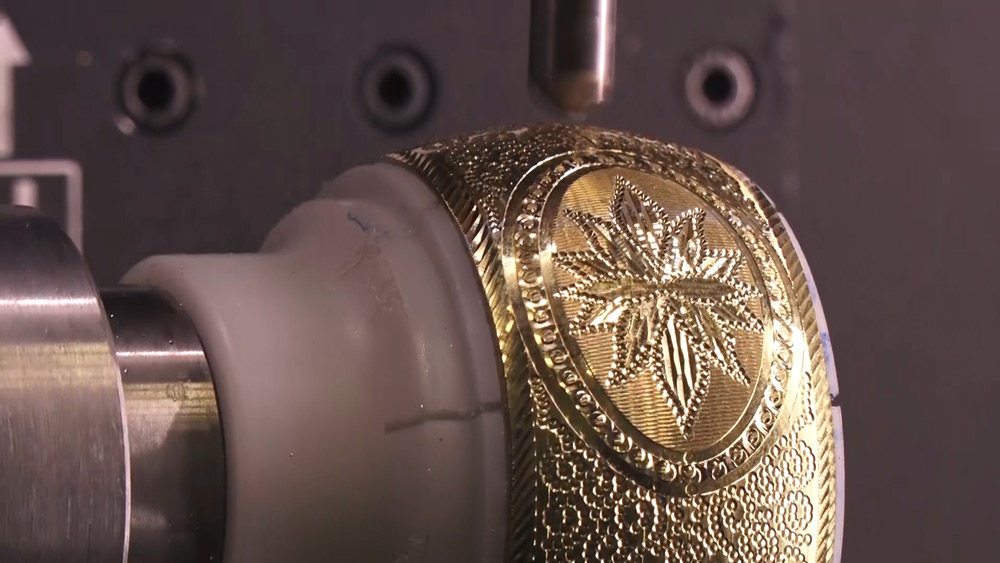
Machine-Made Jewelry
2. Tradition and Heritage: Preserving Ancient Techniques
One of the most compelling reasons why handmade Iranian jewelry stands out is the deep connection to Persian heritage and the preservation of ancient techniques. Iranian artisans have been perfecting these methods for thousands of years, and their work reflects the rich cultural history of the region.
Handmade Jewelry: Keeping Tradition Alive
In Iran, jewelry-making is a centuries-old art form passed down from generation to generation. Artisans use techniques that date back to the time of the Achaemenid and Sassanian empires, incorporating historical designs and cultural symbols into their work. These traditional methods are impossible to replicate with machines.
- Filigree and Granulation: Techniques like filigree (the twisting and curling of fine metal wires to create intricate patterns) and granulation (the application of tiny metal beads to create texture) are hallmarks of Persian jewelry-making. These methods require incredible skill and patience, making each piece a work of art.
- Enamel Work (Minakari): The delicate art of Minakari involves applying and firing vibrant enamel onto metal surfaces. This ancient technique is often used in Persian jewelry to create colorful, intricate designs. The process is labor-intensive and requires expert control—qualities that can’t be replicated by machines.
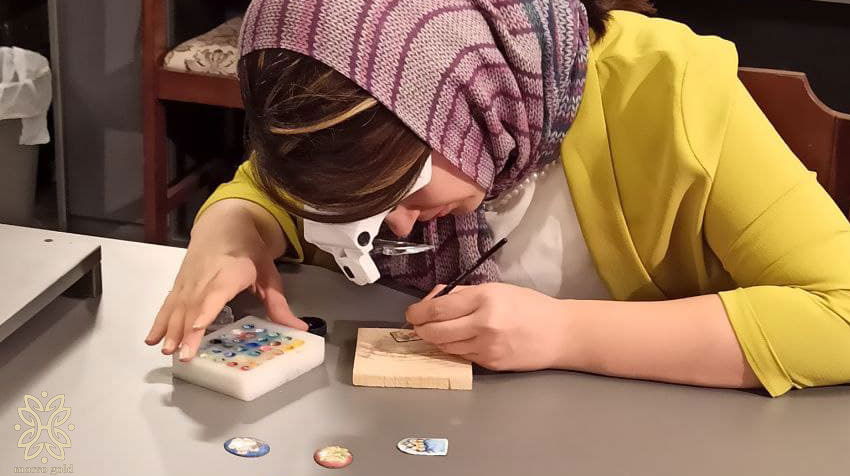
Enamel Work (Minakari)
Machine-Made Jewelry: Loss of Heritage
While machine-made jewelry can mimic certain design elements, it lacks the cultural depth and historical significance that handcrafted jewelry possesses. Machine production often emphasizes contemporary designs and efficiency over preserving traditional craftsmanship, leading to a dilution of cultural heritage.
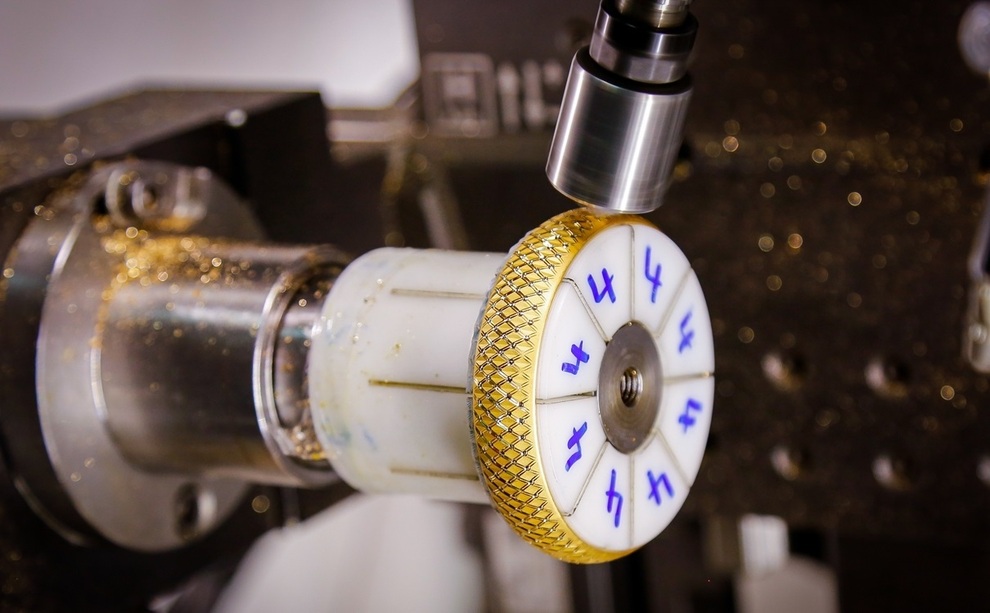
Machine-Made Jewelry
3. Quality and Durability: Lasting Value
Handmade jewelry is often crafted with a level of care and attention that ensures higher quality and durability. Each piece is carefully inspected and refined during the creation process, ensuring that it will stand the test of time. In contrast, machine-made jewelry can sometimes prioritize quantity over quality, resulting in pieces that may not be as durable or long-lasting.
Handmade Jewelry: Superior Materials and Construction
Artisans who create handcrafted Iranian jewelry typically use high-quality materials such as solid gold, silver, and precious or semi-precious stones like turquoise and lapis lazuli. These materials are chosen not only for their beauty but also for their longevity.
- Durability: Because each piece is crafted by hand, artisans take the time to ensure that the materials are properly shaped, set, and finished. This careful construction process makes handmade jewelry more durable than many mass-produced items.
- Personalized Craftsmanship: Artisans can also customize pieces to suit a client’s specific needs, whether it’s adjusting the size or choosing specific stones. This level of personalization is rarely available in machine-made jewelry, where uniformity is prioritized over individuality.
Machine-Made Jewelry: Lower Costs, Lower Durability
Machine-made jewelry, while often more affordable, may not offer the same longevity or quality as handcrafted pieces. The use of cheaper materials, lighter metals, or plated finishes in mass production can result in jewelry that tarnishes or breaks more easily over time.
- Mass Production Issues: Machine-made jewelry may be subject to issues like poor quality control, resulting in pieces that look identical but lack the finer details and sturdiness of handmade items. As a result, these pieces may not last as long or retain their value over time.
4. Uniqueness and Personal Meaning: A Story Behind Every Piece
One of the most significant advantages of handmade Iranian jewelry is the personal meaning and story behind each piece. Every item is crafted by an artisan who brings their style, creativity, and connection to Persian culture into their work.
Handmade Jewelry: One-of-a-Kind Creations
When you purchase a piece of handcrafted jewelry, you are not just buying an accessory—you are investing in a piece of art that has a unique story. Each item is created with care and attention, making it truly one-of-a-kind. This level of personalization is something that mass-produced, machine-made jewelry simply cannot offer.
- Cultural Significance: Persian jewelry often incorporates motifs and symbols that have cultural and spiritual meanings, such as Zoroastrian symbols, floral patterns, or Persian poetry. These elements give the jewelry a deeper significance, connecting the wearer to Iranian history and tradition.
- Personal Connection: Handmade jewelry often carries a personal connection between the artisan and the wearer. Whether it’s a custom design or a piece that reflects the artisan’s style, handmade items have a level of authenticity and soul that mass-produced pieces lack.
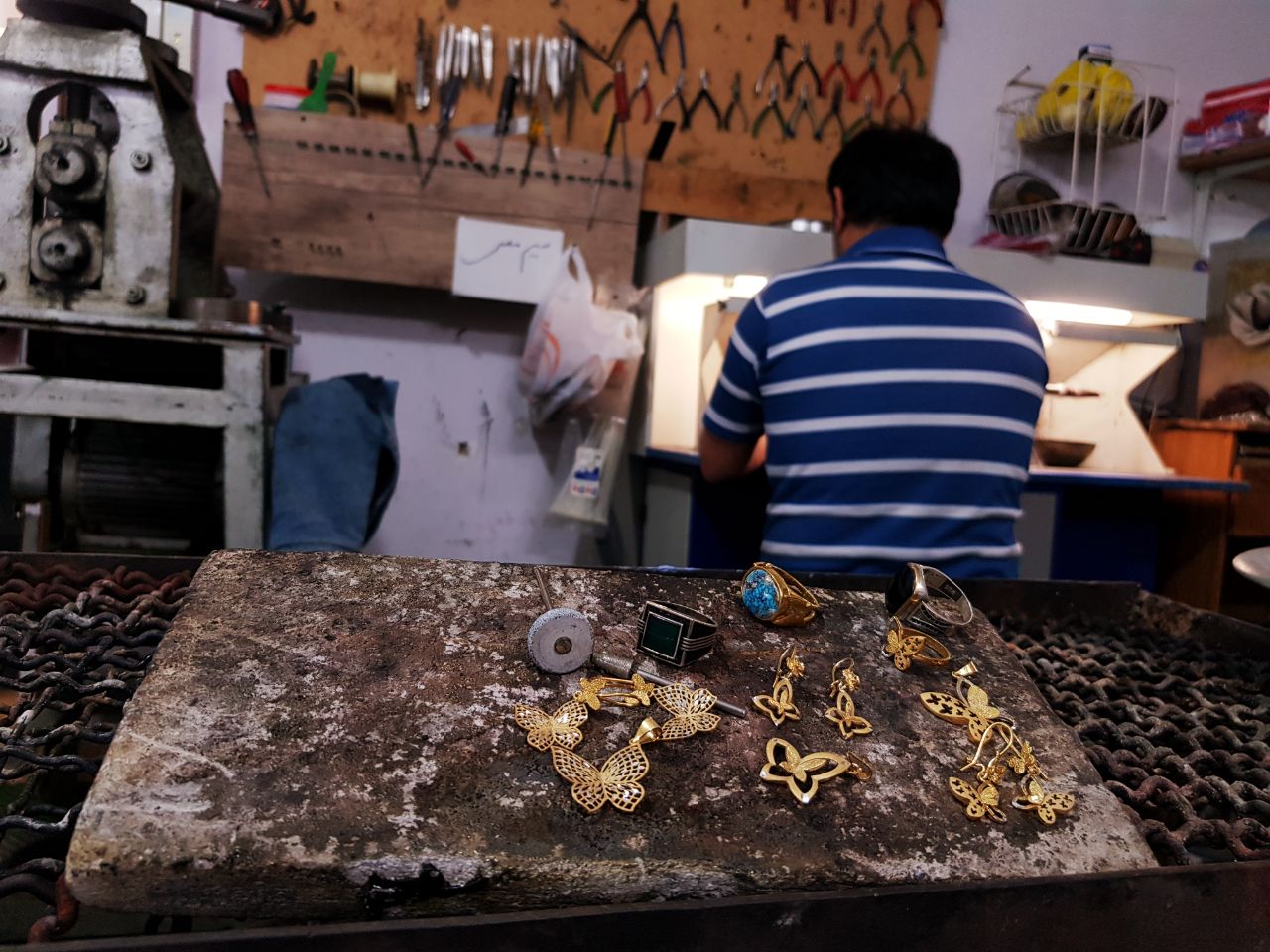
Traditional jewelry-making workshop
Machine-Made Jewelry: Uniform and Impersonal
While machine-made jewelry can be attractive, it often lacks the personal connection and uniqueness that comes with handmade pieces. Machine-made jewelry is designed for mass consumption, which means that many people may own the same item, reducing its significance.
- Standardized Designs: Machine-made jewelry is often produced in large quantities, leading to uniformity and a lack of individuality. These pieces are typically created to appeal to broad tastes, rather than reflecting the personal artistry of a skilled craftsman.
5. Ethical and Sustainable Practices
Another reason handcrafted Iranian jewelry stands out is its connection to sustainable and ethical practices. Artisans who create handmade jewelry are often more aware of the materials they use and the impact their work has on the environment.
Handmade Jewelry: Sustainable and Ethical
Artisans who create handmade jewelry often focus on using ethically sourced materials and sustainable practices. For example, many Iranian jewelers use locally sourced stones like Neyshabur turquoise and work with recycled metals to reduce their environmental impact.
- Small-Scale Production: Handmade jewelry is typically produced in small quantities, reducing waste and the environmental footprint associated with mass production.
- Ethical Sourcing: Artisans are often closely connected to the sources of their materials, ensuring that precious metals and stones are obtained ethically and without exploitation. This level of transparency is often missing in the machine-made jewelry industry.
Machine-Made Jewelry: Environmental Impact
Machine-made jewelry, particularly when produced on a large scale, can have a significant environmental impact. The mass production process often involves large-scale mining, chemical processes, and global transportation, all of which can contribute to pollution and resource depletion.
Conclusion: Why Handmade Iranian Jewelry Stands Out
Handmade Iranian jewelry is a testament to the rich cultural heritage, craftsmanship, and artistic creativity that have defined Persian jewelry-making for centuries. The differences between handcrafted and machine-made jewelry go beyond aesthetics—handmade pieces offer a level of uniqueness, quality, tradition, and personal connection that mass-produced items cannot match.
At LetsGoYelo, we take pride in offering a collection of handcrafted Iranian jewelry created by skilled artisans who use traditional techniques to bring Persian artistry to life. Explore our range of one-of-a-kind pieces and experience the beauty, history, and craftsmanship that make handmade Iranian jewelry truly special.


